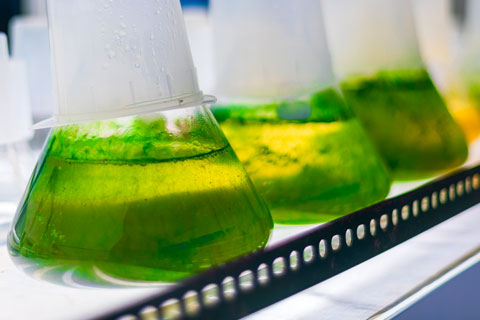
Summary
|
For this project, team members from the Miller School of Medicine, the Rosenstiel School of Marine and Atmospheric Science, and the College of Engineering will use South Florida as a test case to investigate the risks posed to people who inhale toxic aerosols from breaking waves on the beach. They spent this past summer investigating the production of particles released into the air by harmful algal blooms (HAB) of cyanobacteria, commonly known as blue-green algae, and elevated bacteria levels in South Florida’s coastlines and waterways.
To date, almost all research on HABs and pathogens, which are a worldwide problem often triggered by agriculture fertilizer and sewage washing into waterways, has focused on human contact with them while swimming or consuming seafood. UM’s experts hope to fill the gap in knowledge about the ability of toxins produced by blue-green algae and marine pathogens to become airborne, inhalable particles.
“This research is especially timely as several impacts of climate change, including increased nutrient run-off, sea-level rise, and increased risk due to storm surge, are all predicted to increase both marine pathogens and harmful algal blooms in South Florida,” the team led by Cassandra Gaston, assistant professor of atmospheric sciences at the Rosenstiel School, wrote in their application.
In this phase of their research, the team, which added new collaborators to its initial group, will conduct field studies to test HAB exposure levels in different communities and controlled experiments on the sea-to-air transfer of marine toxins and pathogens, and their toxic effects in a Drosophila animal model, in the Rosenstiel School’s SUrge-STructure-Atmosphere INteraction, or SUSTAIN, facility, which can simulate winds and waves.
|
Phase I (2018)
|
Integrating Oceans and Human Health Sciences
This proposal brings together biomedical researchers, ocean scientists, and engineers to explore the positive effects the ocean has on mental and physical health, as well as the risks posed by environmental and climatic changes to such “blue” environments.
Team members initially plan to focus on novel areas of research in the growing field of oceans and human health sciences particularly relevant to Florida—the risks posed to people who inhale toxic aerosol particles released into the air by harmful algal blooms often triggered by fertilizer washing into coastal waters.
“Most research has focused on human exposure to algal toxins in the water or seafood. With the exception of brevotoxin (produced by the Florida red tide), little is known about the health effects of breathing aerosols with other algal toxins in them,” team members noted. “Our findings will be used to encourage engagement with natural blue environments while also helping to devise strategies to lower risks.”
|
Team
|
Cassandra Gaston, RSMAS; Alberto Caban-Martinez, Public Health Sciences; David Lee, Public Health Sciences; Grace Zhai, Molecular and Cellular Pharmacology; Larry Brand, RSMAS; Kimberly Popendorf, RSMAS; Brian Haus, RSMAS; Helena Solo-Gabriele, Engineering; James Klaus, Arts and Sciences; Angela Clark, RSMAS Science Library. |




